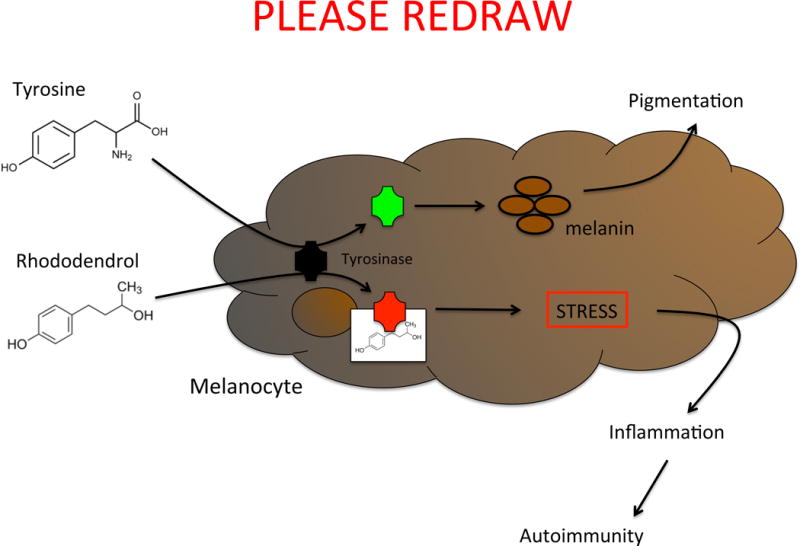Fig. 2.

Schematic of the pathogenesis of chemical-induced vitiligo. Tyrosine is processed into melanin by the enzyme tyrosinase. Chemicals that act as tyrosine analogs interact with tyrosinase (or other melanin-producing enzymes), disrupt melanin production, and induce the cellular stress response, which leads to inflammation and autoimmune destruction of melanocytes.
